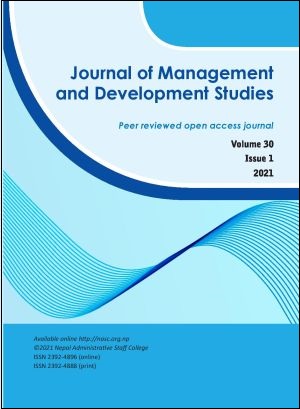Remittances and Development in Nepal: A Disaggregated Analysis
DOI:
https://doi.org/10.3126/jmds.v30i1.36350Keywords:
remittance, social development, school enrolment, malnutritionAbstract
Remittance flows into low/middle-income counties are on a continuous rise and this trend is seen in Nepal as well. There is a constant increase in the number of the Nepalese workers migrating for foreign employment and that has been instrumental to boost the remittance inflow into the country. Remittance is contributing significantly to Gross Domestic Product and is emerging as a backbone of the country’s economy. However, the ways remittances contribute to social development necessitates that many facets of development be explored because they affect the country’s development in multiple ways. This study attempts to analyse the possibility that remittance positively contributes to social development, considering health and educational development as its proxies. Based on the latest available disaggregated educational enrolment and nutrition data of 2009 A.D. by districts, this study analyses the impact of the remittances on school enrolment and improvement in health status of families who remain at home. The results show a significant relationship between remittance and school enrolment but it also shows an insignificant relationship between remittance and health. The findings may be of interest to the countries and the policy makers with remittance being the dominant source of foreign currency. As the results of this study have indicated that remittances may serve as a contributing factor to the educational enrolment for social development.
Downloads
Downloads
Published
How to Cite
Issue
Section
License
© Nepal Administrative Staff College




